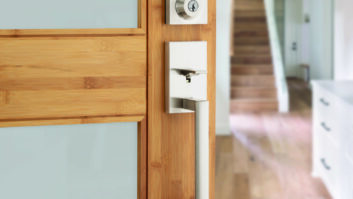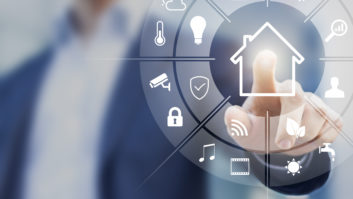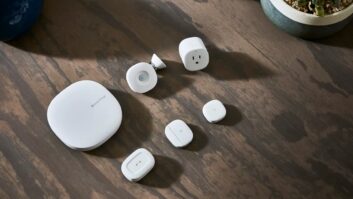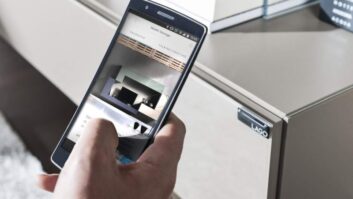NEW YORK – Do-it-yourself smart-home technology has come into its own, if the number of recent product introductions is an accurate measure.
The market has not only grown more crowded, it has gone mainstream, fueled by the ubiquity of smartphones and tablets that control and monitor DIY home systems
At the recent International CES, for example, around five dozen smart-home vendors showed off their smartphone-controlled wares at the Smart Home Marketplace, the show’s first area set aside exclusively for home-automation products. The numbers exclude individual company and alliance booths scattered around the show floor.
Recently announced products underscore multiple marketplace trends. Here are 10 key trends cited by marketers as defining the year ahead:
1 Smart-home products have gone mainstream. Dribs-and-drabs of DIY smart-home product and platforms have been introduced in the past couple of years, but the sheer volume of new options unveiled recently marks a major coming-out party for the emerging product category. A plethora of affordable, self-installed component-based smarthome components, all controlled by smartphone and tablet apps, present mainstream electronics retailers with new sales opportunities.
2Smartphones fuel the DIY smart-home market. A total of 88 percent of mobile phone buyers last November bought smartphones, a rise of 2 percent over October, comScore found. That means the percentage of people buying smartphones instead of feature phones is now likely more than 90 percent. This brings smartphone ownership penetration to around three-quarters of all Americans and rising, an ownership critical mass that makes the mainstream app-based DIY smart home viable.
3Big messy party. If the DIY smart-home category were holding a coming-out party, it would be a noisy messy party. Smart-home vendors from literally A (ADT) to Z (Zipato) present their own particular – and often peculiar – visions of what the DIY smart home will look like and the future of the category.
Already announced and established platforms include Wink, Lowe’s Iris, Lutron’s Clear Connect, Belkin’s WeMo and AT&T’s Digital Life, but almost two dozen new brands or OEM providers were announced or expanded in recent weeks. They include the open-source AllJoyn platform from the AllSeen Alliance, Avi-on’s CRSmesh Bluetooth-based suite of products, Greenwave’s Axon Internet of Things (IoT) platform, AwoX’s Bluetooth-based home lighting and wireless multiroom-audio system, and appliancebased smart-home platforms, including the open source Bosch/ABB/Cisco system and DADO Labs’ eponymous platform.
Other new platforms include Fantem’s Oomi; Fibaro; First Alert’s Onelink; Nexia’s Home Intelligence platform; Nortek’s 2GIG/Go!Control; Opcom’s Home, which uses the company’s proprietary Opcom Link wireless protocol; Pella’s Insynctive; Plugo from Conntek; Sage by Hughes; the DECTbased ULE (Ultra Low Energy) Alliance platform; and Webee’s Smartee.
Some of the platforms might have to be merged, acquired or cleared out before a real picture of an understandable market can emerge.
4 Apple is a DIY smart-home presence. Because of Apple’s disruptive presence in any market that it enters, Apple’s HomeKit homeautomation initiative cannot be considered just another platform.
Three major chipmakers – Broadcom, Marvell and TI – are producing processors, and six companies – Chamberlain, Elgato, iDevice, iHome, MyFox and Schlage – have unveiled the first HomeKit-compatible products. And more than a dozen other companies have indicated intentions to introduce HomeKitcompliant products soon.
HomeKit’s major technological contribution to the DIY home automation is enabling whole-home macro control via Siri voice command.
Because of Apple’s clout, DIY smart-home makers are warily or actively investigating how to make their products get along with HomeKit products.
5Bluetooth Mesh: One protocol to rule them all? Smart-home components, bridges and hubs contain a confusing array of open or proprietary protocols and platforms: Wi-Fi, ZigBee, Z-Wave, DLNA, Bluetooth, plus a variety of proprietary company-specific wireless protocols. In development is the next-gen smart Bluetooth specification, v4.2, which will include Bluetooth Mesh to spread Bluetooth range beyond the usual 30 to 50 feet.
The open Bluetooth mesh specification will be able to replace Wi-Fi – and maybe all the other proprietary wireless protocols – for command and control functions when the spec becomes available for full DIY smart-home exploitation, perhaps by CES 2016.
6 Retailers in control. Unlike any other CE category, retailers are currently in control of the DIY smart-home category. The theory is, consumers are most likely to trust DIY retailers such as Lowe’s (Iris), Home Depot (Wink) and Staples (Staples Connect by Zonoff) to assemble their initial DIY smart-home systems. The competitors with the most potential to challenge these retailers are companies with home-space experience such as ADT, AT&T, Carrier, Lutron, Pella and various cable providers that provide smart-home systems to their customers.
7It’s security, stupid. In an industry filled with platform, protocol and approach disagreement, one point of agreement among the smarthome parties is that security – and especially eyes away from home – is the driving force to bring consumers into stores.
And it’s not just security to alert homeowners of break-ins but also the security of knowing whether a smoke detector went off in your absence, or a water leak was detected, or the home heating system is malfunctioning.
Strategy Analytics found that almost a quarter of DIY smart-home revenue is derived from smart security cameras, with Dropcam in the lead. New smart cameras include the column-shaped Netatmo Welcome, due in the second quarter with face recognition at an undisclosed price; IC Real Tech’s 720-degree Allie Home and Play (both due in the second half at $500 each; Piper’s new NV with night vision at $270 and due in February; MyFox’s two HomeKitenabled cameras, due in the second quarter at $199 and $299 with siren, mechanized auto-shutter and geo-fencing;, and the spherical full high-def Amaryllo iCamPRO, due in May at $299.
8Nest doesn’t own the smart-thermostat market. Thanks to its open API, Nest compatibility is a familiar boast from many DIY smarthome vendors. But Nest’s ubiquity didn’t stop companies from introducing new smart thermostats of their own.
New models are due from such companies as Alarm.com (the $149 Smart Thermostat, due in the second half); Carrier ($249 Côr smart thermostat, due in February); Ecovent (room-by-room control via inVent smart vent, inForm smart sensor, inControl smart hub); and First Alert (Onelink Wi-Fi thermostat, with pricing and availability to be announced).
9Most promising upcoming DIY smart-home category: smart locks. Last year, the first and only smart lock on display at CES was the Kwikset Kevo powered by UniKey. This year, lock leaders Schlage and Yale both announced smart locks, signaling a recognition of market demand for app-controlled smart locks.
Yale’s $225 Real Living NFC Deadbolt, due in February, works by touching it with an Android phone loaded with the Yale Digital Key app. Later this year, Schlage will unveil several HomeKitcompliant Schlage Sense keyless locks that can be opened via Siri.
Meanwhile, original smart lock makers Kwikset and August announced remote access lock accessories. Kevo’s Bluetooth-enabled Kevo Plus, due in the spring at an unannounced price, enables remote locking and unlocking, unlimited activity monitoring, event scheduling, lock grouping and unlimited eKeys that can be emailed to guests via a paid subscription. August’s Wi-Ficontrolled $50 August Connect, due in February, enables similar remote lock status and operation functions.
10Most potentially fertile smart-home devices: smart LED bulbs. An LED bulb is an electronics device with a built-in processor jacked into a power source, just like any microprocessor device, which means its capability of much more than giving off light and changing colors.
A number of smart LED-bulb vendors showed off LED bulbs with Bluetooth speakers built in, including ION’s Sound Shines. These $129/ pair lights, due in March, screw into separate light bulb sockets to create stereo sound, as do AwoX’s 80-watt StriimLIGHT stereo LED bulbs at $299. They are already available.
AwoX is among the first to recognize the functional blank slate of the LED bulb via its connected lighting line. For instance, its $199 CamLIGHT, due in April, will incorporate both a Bluetooth speaker and a motorized security camera with 360-degree coverage and night vision. The company’s $49 Safe- LIGHT, due in the fall, will include a built-in smoke detector, and the $49 AromaLIGHT, due in March, will incorporate an adjustable scent diffuser.












